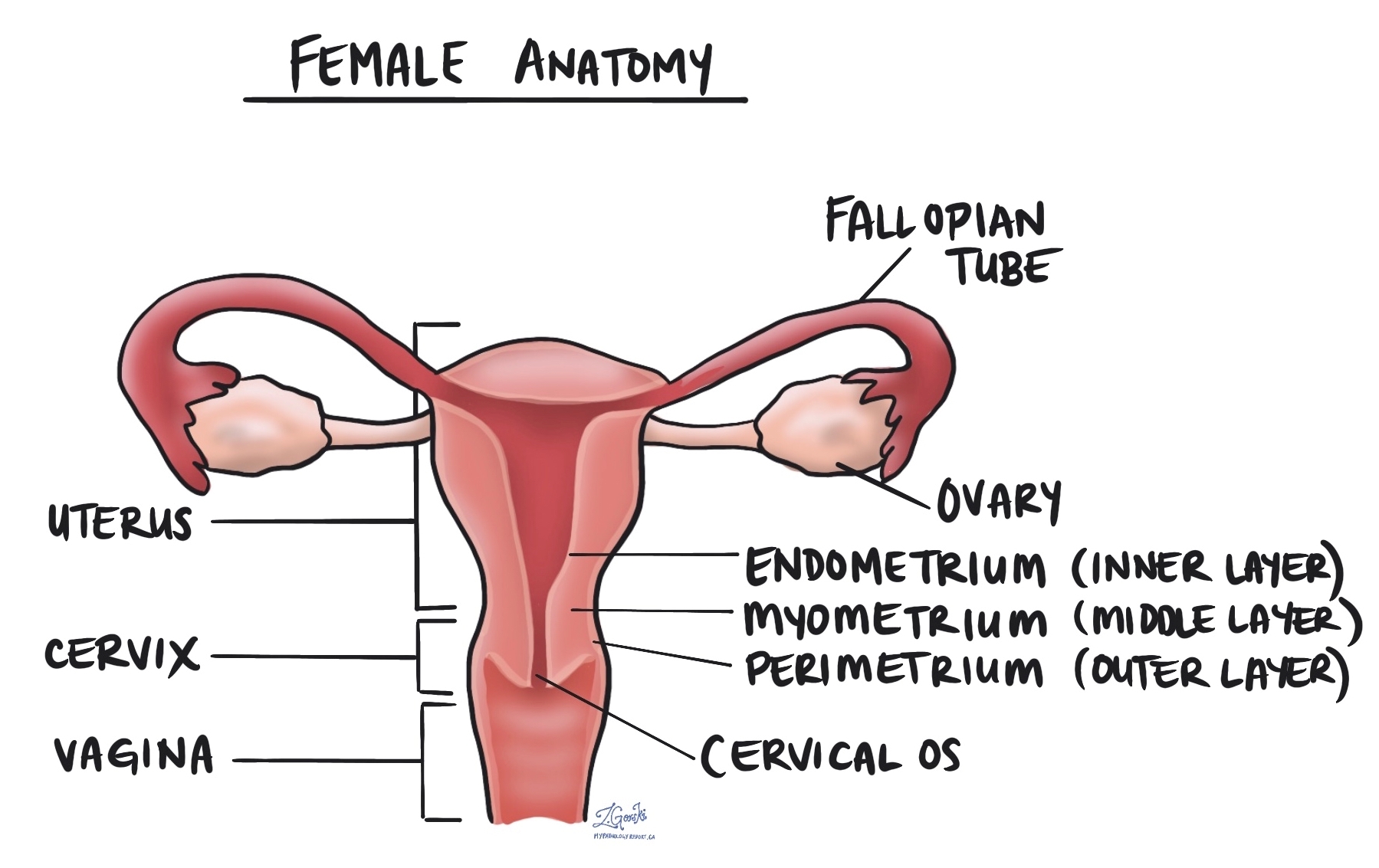by Jason Wasserman MD PhD FRCPC and Sarah Strickland MD FRCPC
June 22, 2023
What does inactive endometrium mean?
Inactive endometrium is a term pathologists use to describe the appearance of endometrial tissue (the tissue found on the inside of the uterus) that is not under the influence of normal (physiological) levels of estrogen and progesterone or is altered due to exogenous factors.

Is inactive endometrium normal?
Inactive endometrium is a normal finding in prepubertal girls and post-menopausal women. Inactive endometrium is also a normal finding in women taking some types of hormonal medication.
What causes the endometrium to be inactive?
The endometrium changes in response to hormones such as estrogen and progesterone which are released from the ovary during the menstrual cycle. In the absence of these hormones, the endometrium becomes inactive. Any condition or medication that decreases the production of estrogen and progesterone or alters its effect on the endometrium can result in an inactive endometrium.
Causes of decreased hormone production and inactive endometrium include:
- Menopause: This is the most common cause. During menopause, the ovaries produce fewer hormones, leading to a cessation of the menstrual cycle. As a result, the endometrium becomes thin and atrophic, displaying characteristics of inactivity.
- Hormonal imbalances: Hormonal imbalances, such as decreased levels of estrogen and progesterone, can contribute to the endometrium becoming inactive. These imbalances may be caused by conditions such as hypothalamic dysfunction or certain medications.
- Hypoestrogenism: Low estrogen levels, known as hypoestrogenism, can result in the endometrium becoming inactive. This can occur in conditions such as premature ovarian failure, certain autoimmune disorders, or after cancer treatments like chemotherapy or radiation therapy.
- Chronic endometritis: Chronic inflammation of the endometrium, known as chronic endometritis, can cause an inactive appearance under the microscope. It can be caused by persistent infections or other underlying inflammatory conditions.
- Certain medications or therapies: Certain medications or therapies, such as long-term use of certain contraceptives, hormonal therapy, or medications that suppress the menstrual cycle, can result in the endometrium becoming inactive.
What does inactive endometrium look like under the microscope?
When examined under the microscope, inactive endometrial tissue shows the following features:
- Decreased thickness: The endometrial tissue covering the inside of the uterus appears thinner compared to the proliferative or secretory phases of the menstrual cycle. It lacks the typical glandular and stromal changes associated with hormonal fluctuations.
- Few or absent glandular changes: The glands within the endometrium may be reduced in number or absent. This condition often lacks the elongated and coiled appearance of glands seen during the proliferative or secretory phases.
- Sparse stroma: The stroma, which is the connective tissue that holds together the glands in the endometrium, may be reduced or less cellular. The stromal cells may appear less active and show signs of atrophy.
- Loss of differentiation: This condition may exhibit decreased cellular differentiation. The cells may appear flattened or simplified compared to the columnar epithelial cells normally found in the proliferative or secretory phases.


